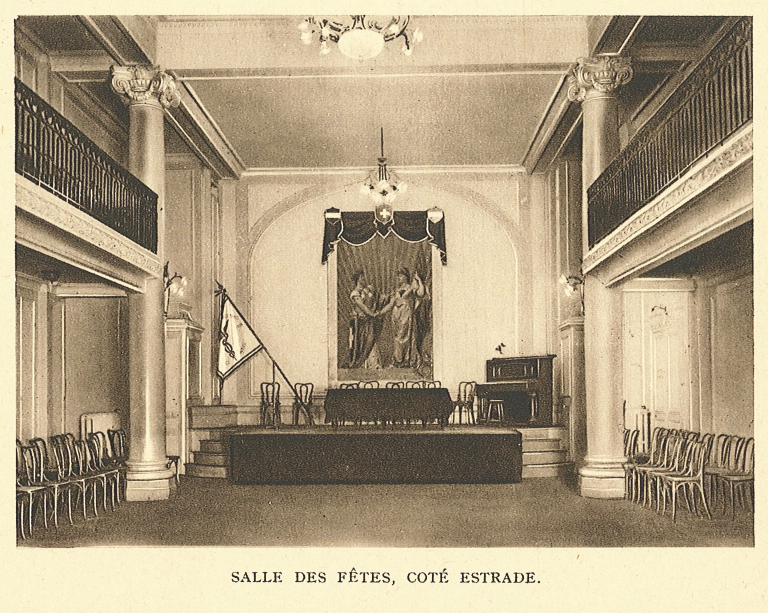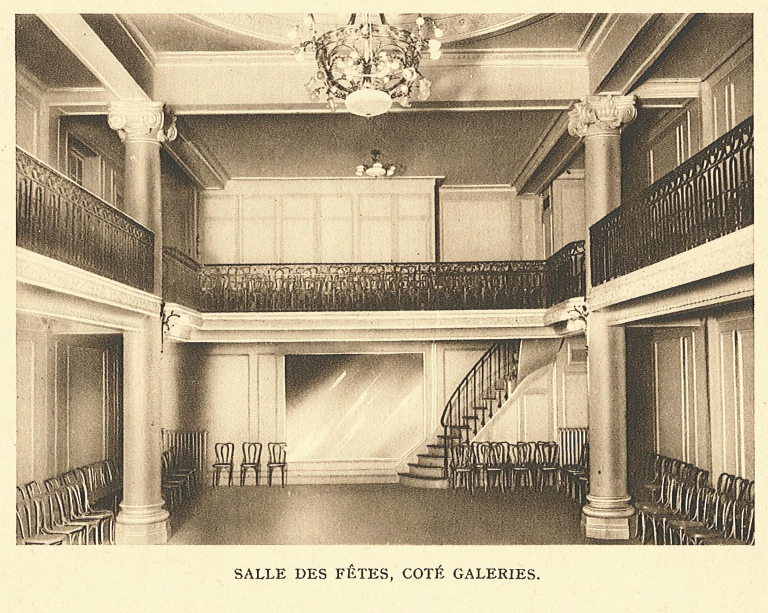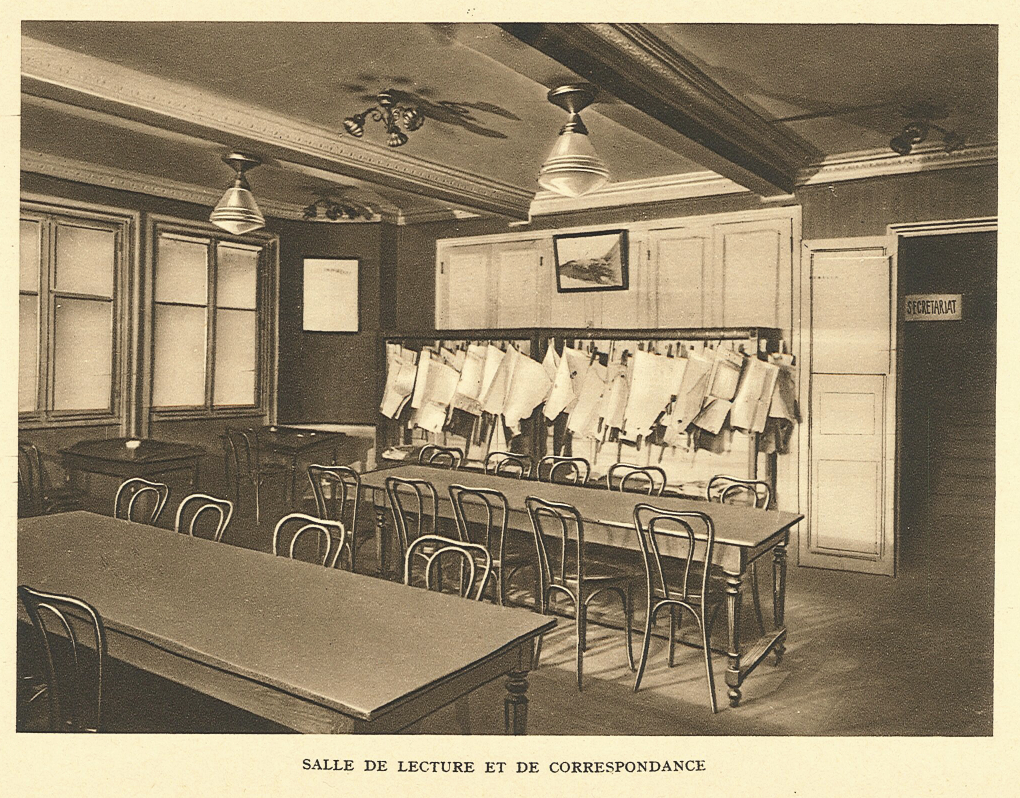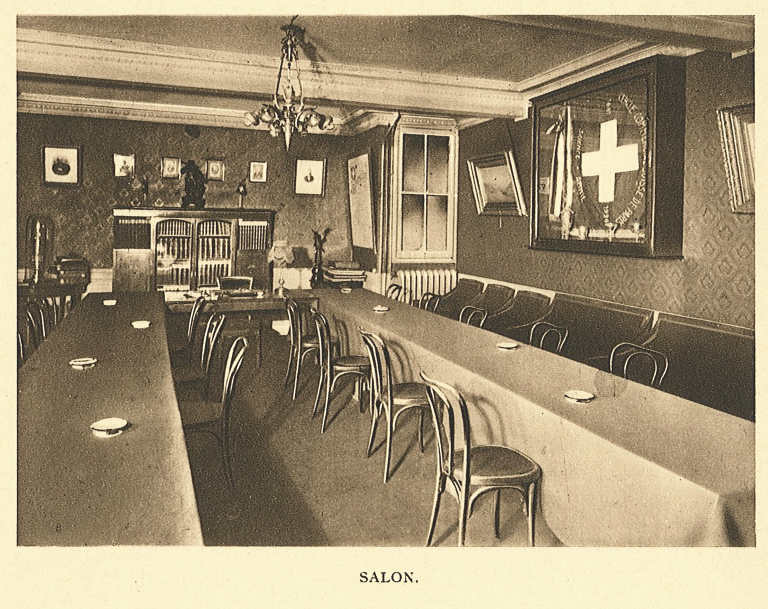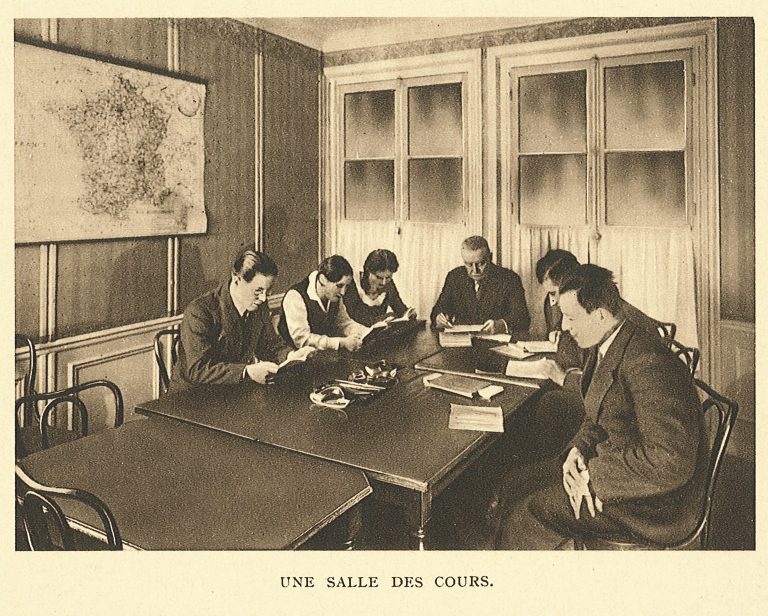A long, rich history of teaching French language and culture

The Swiss presence in France is centuries-old. As a consequence of this long tradition of immigration, at the end of the 19th century, the Swiss community in France numbered in the tens of thousands. Back then, Switzerland was a relatively impoverished country, with a high incidence of emigration.
In 1881, the German-speaking Swiss expatriates of Paris created an association, the Cercle Commercial Suisse (CCS), designed to facilitate their integration by improving their French language skills and understanding of the French business context. For CCS members, adaptation, integration and mutual assistance were all fundamental activities.
In 1896, an office was established to assist Swiss citizens in their search for employment in France, known as the Swiss Free Placement Service.
In 1901, the French law pertaining to associations was passed. The CCS already had nearly 3,000 members, to whom it provided a range of services, and notably French language classes.
1912: the building at 10 rue des Messageries is inaugurated, which remains the Cercle Commercial Suisse headquarters and locale for our school to this day.
In 1933, the school began offering a full-time programme, known as a “day school”, designed to teach French language and culture with a strong professional focus (classes in law and business correspondence techniques).
From 1940 to 1947, the CCS remained closed, instead entrusting its premises to the Red Cross for the housing of refugees. Shortly after the end of the war, the school reopened and obtained recognition from the Swiss federal government, giving it the possibility to further develop and promote French as a Foreign Language classes, largely targeted at commercial apprentices.
In 1967, the Swiss federal government awarded an annual state subsidy to the CCS, giving it a new lease on life. Classes and teaching techniques began to evolve in recognition of the value of the cultural and professional dimensions of language learning. The school was able to keep up with these trends, going so far as to organize classes outside of Paris (in Brittany, Normandy, the Savoie, Burgundy, the Atlantic Coast, Corsica…).
In the 1980s, the notion of French as a Foreign Language (FLE) properly takes off. Conscious of the usefulness of French as an international relations tool, the Chamber of Commerce and Industry of Paris (CCIP) developed exclusive exams for this purpose, but specifically applied to the business world. In parallel, the CCS school developed a preparatory course for the CCIP exams, which certain Swiss cantons adopted in view of its excellence.
In 1991, the FLE market reaches its pinnacle. Faced with an ever increasing demand, the school changed its name, becoming the École Suisse Internationale de Français Appliqué (ESIFA), signaling its openness to an international clientele beyond the Swiss community: a broader client base who were also attracted by the school’s quality and professionalism.
Four years later, in 1995, the school board experimented with offering a French course in Dijon in order to meet this growing demand. The Burgundy region and its capital offered a number of advantages for Swiss language learners. The initiative proved very successful. Over the span of four years, the number of Swiss students in Dijon multiplied tenfold.
In 2001, the CCS further consolidated by establishing its school in Dijon, for which it rented out a permanent space right in the heart of the city.
Our school has always sought to meet the needs of its clientele, and in 2003, we registered with the Academy of Paris as an establishment of higher learning. This new status entailed a change of logo and title [École Suisse Libre Internationale de Français Appliqué], which entered into effect in 2005.
In 2007, the European Campus of Sciences Po in Dijon opened an Intensive French Programme (PFR) targeted at international first-year students. A partnership ensued with the École Suisse Internationale to cater to these students, providing them with intensive French classes during their first two semesters.
In 2008, our school and other French language centers joined forces to create an association, the Groupement FLE, whose objective is to strengthen the quality, availability and cooperation amongst its French as a Foreign Language members.
In 2011, our Dijon school inaugurated its new locale at 1 rue Davout, providing a larger and better-equipped space in which to receive our many language learners.
2020: In an effort to keep pace with students’ evolving needs, the École Suisse Internationale developed a new distance learning programme, featuring innovative online teaching methods in French, all while maintaining our traditional quality standards.

1881, in Paris, France ...
- Jules Ferry established free education and mandatory primary education.
- The law pertaining to the freedom of the press is passed, giving rise to “Post No Bills” signs that remain visible on Parisian streets to this day: “Défense d'afficher - Loi du 29 juillet 1881”.
- Auguste Renoir paints his famous oeuvre “Luncheon of the Boating Party”. Edgar Degas and Camille Pissaro organize the Sixth Impressionist Exhibition on the Boulevard des Capucines, held in an annexe of photographer Nadar’s workshop.
- Jacques Offenbach staged his opera fantastique, the Tales of Hoffman, at the Opéra-Comique.
- The Sacré-Coeur is yet to grace the Parisian skyline and Paris still has no Eiffel Tower, no cinemas, no metro, and no cars or buses.
- Electricity has just made its debut. The first International Exhibition of Electricity is held in the Palais de l’Industrie on the Champs-Élysées, but most Parisian homes are still lit by gas, petrol or candlelight.

